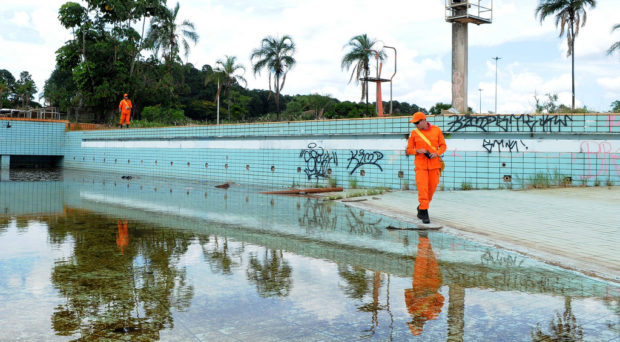
 In her recent article, Phenomenological analysis of going home in Caribbean-American international travelers, Dr. Koya C. Allen of the U.S. Department of Defense discusses why travelers returning home to countries in the tropics (in this case, the Caribbean region) are often lax with mosquito avoidance practices (MAP) and forego pre-travel health consultations, putting themselves at a higher risk of contracting mosquito-borne illnesses, such as dengue.
In her recent article, Phenomenological analysis of going home in Caribbean-American international travelers, Dr. Koya C. Allen of the U.S. Department of Defense discusses why travelers returning home to countries in the tropics (in this case, the Caribbean region) are often lax with mosquito avoidance practices (MAP) and forego pre-travel health consultations, putting themselves at a higher risk of contracting mosquito-borne illnesses, such as dengue.
Koya C. Allen is an Infectious Disease Subject Matter Expert in the Counter BioThreats Cell of US European Command Headquarters for the US Department of Defense where she provides expertise and support in biosurveillance and pandemic preparedness for the European region.
How did you become involved in the field of travel medicine?
As an avid traveler with a tropical medicine and parasitology background, I had a general interest in the many infectious diseases you can acquire when traveling abroad. In addition, my work in public health and vector-borne disease control locally and regionally, made it apparent that an often-neglected aspect of disease surveillance and control included the niche of disease movement via travelers.
So over the years, hearing stories and observing travel-related illnesses, it became a growing interest to improve public health efforts in travel medicine by addressing gaps in the understanding of behavioral aspects of disease risks and identifying necessary improvements in surveillance and prevention of imported diseases.
In your article, you discuss how visiting friends and relatives (VFR) travelers have been associated with increased risk of travel-associated illnesses due to poor adherence to travel guidelines and lack of pre-travel health consultations. What are the main reasons for this?
These travelers often stay in local communities with their relatives or friends, and engage in activities common to locals, rather than resorts and hotels where the environmental conditions may be more controlled.
One explanation for these trends in VFR travelers includes lower risk perception when going to a place considered safe; many relate family and friends to ‘home’ and a place of comfort. Additionally, these travelers often stay in local communities with their relatives or friends, and engage in activities common to locals, rather than resorts and hotels where the environmental conditions may be more controlled.
Specifically for vector-borne diseases such as dengue, this may mean increased exposure to infected mosquitoes and lax mosquito control practices within the local community. Similarly, for MAP, this relation to home and comfort or safety minimizes the expectation for disease risks in some cases, and may increase the laxity in personal preventative measures, such as reapplication of insect repellent, or wearing light-colored long sleeves and pants in a tropical environment.
For pre-travel advice, a correlating rationale exists; why get advice on what to do when going to some place familiar?
Why did you choose to focus your study on dengue, as opposed to other communicable diseases?
With a large proportion of the world at constant risk, dengue is an important disease of concern for population health in addition to travel health.
As we know, dengue is the most common arbovirus worldwide with an estimated 390 million cases annually. With a large proportion of the world at constant risk, dengue is an important disease of concern for population health in addition to travel health.
Even in countries without ongoing transmission like the US, dengue is a leading imported disease that is grossly underestimated. In addition, the recent advances in vaccine development have not proved suitable for travel health. So while there are many other significant arboviral threats, such as Zika, Chikungunya or West Nile Virus, Dengue remains a persistent threat that is sometimes neglected and needs to be addressed.
What are common misconceptions about dengue among VFR travelers?
An important common misconception regarding VFR travelers in general is in the scope of who this terminology includes and defines. Many believe the term alludes to immigration status and returning to a home country; however, VFRs can include second generation individuals with no prior travel history to a location, as well as individuals going to a place where they have no heritage, but have friends in that location.
An important aspect of this study was the idea that VFR behavior and risk can transcend beyond people with friends or family in a destination; rather, it could include travelers new to a place that feel ‘at home’ or comfortable in a new travel destination.
Moreover, it could include individuals traveling in groups with people who have prior history or relations, which then elicits the same feelings of comfort and safety. This concept is one aspect of the cultural embeddedness model that can facilitate understanding of travel behavior and infectious disease risks.
What should clinicians do to ensure more pre-travel consultations and guideline adherence among VFR travelers?
Travel health providers can build partnerships with local general practice physicians and travel agencies to share general information about safe and healthy travel.
The key thing clinicians can do is information dissemination. Travel health providers can build partnerships with local general practice physicians and travel agencies to share general information about safe and healthy travel.
General practitioners should always ask about travel history in sick patients, but they should also incorporate aspects of travel health in wellness visits. They can engage in friendly conversations that inquire on activities and travel so that even when the primary purpose of the visit is not a pre-travel consultation, some advice may be offered or a referral made to a travel health specialist.
Individuals may not always proactively seek travel information, but if access to information is readily available through multiple avenues, the appropriate preventative behavior recommendations may adequately reach our at-risk populations.
This work is the opinions of the author and does not represent the opinions or policies of the US Department of Defense.
Comments